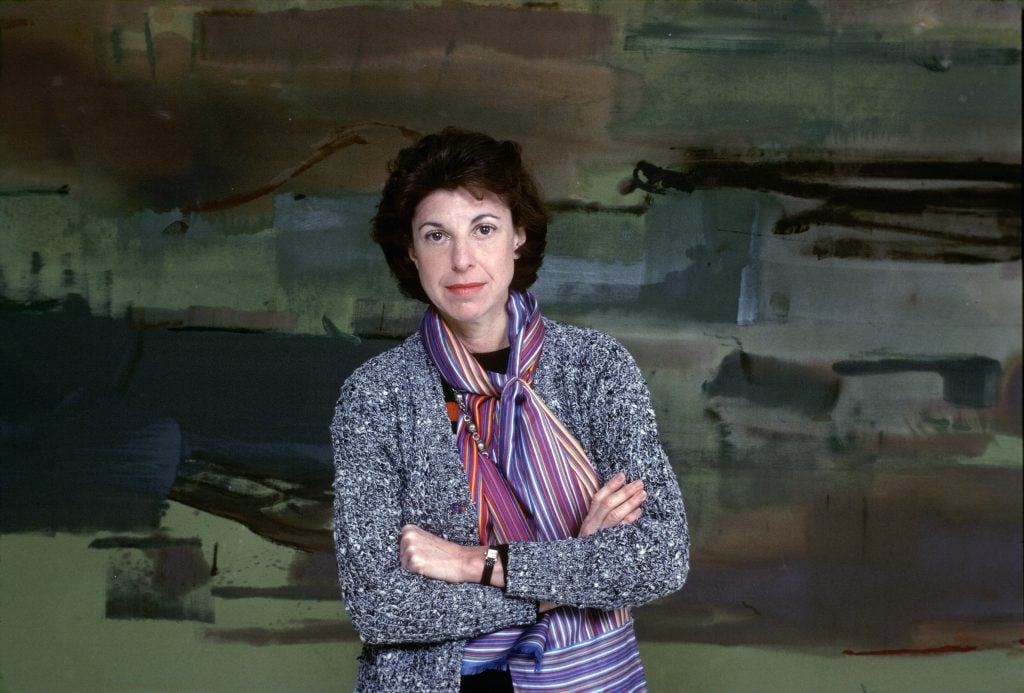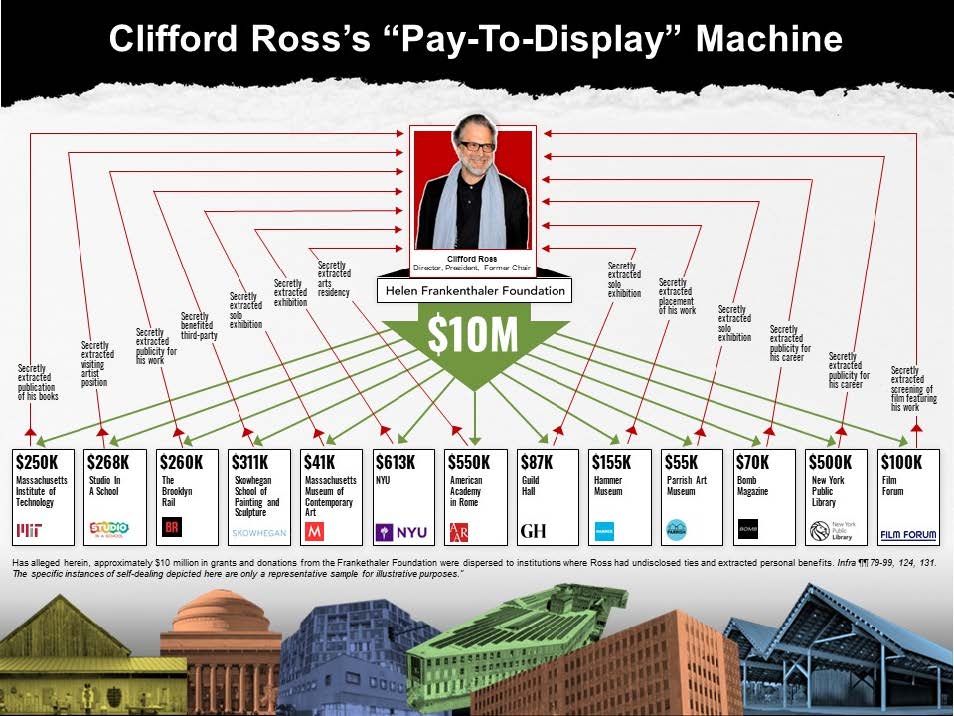Law & Politics
The Lawsuit Against the Helen Frankenthaler Foundation Deepens With ‘Pay-to-Play’ Allegations
In an amended complaint, Frankenthaler's nephew is accusing the foundation's directors of "extensive self-dealing."

In an amended complaint, Frankenthaler's nephew is accusing the foundation's directors of "extensive self-dealing."

Adam Schrader

Frederick Iseman, the nephew of the late Helen Frankenthaler, has filed an amended complaint to his lawsuit against the artist’s foundation and its directors, who include members of his own family, extending his accusations of a purported pay-to-play scheme.
The original complaint accused the nonprofit of mismanaging her legacy, as reported by Artnet News’s Sarah Cascone. In the amended complaint, filed on January 31, Iseman expounded on allegations that his cousin Clifford Ross, another nephew of the artist, used the foundation as a scheme to promote his own art.
“Mr. Iseman’s latest complaint is as baseless as his first filing. This is the case of a former director who was not reelected to the board due to his unprofessional and disruptive conduct. Moreover, Mr. Iseman was actively involved in all major decisions made by the board during his tenure and approved the transactions he now criticizes,” the foundation’s board of directors said in an emailed statement, calling the lawsuit “meritless and spiteful.”
Iseman was terminated from the foundation’s board last spring, ahead of filing the lawsuit in November. The board did not further describe any alleged unprofessional and disruptive conduct by Iseman. The foundation has not yet responded to the lawsuit in court to rebut any of the accusations against it.
Frankenthaler established the foundation in 1984 for the general purpose of promoting and encouraging knowledge and appreciation of art. The foundation received the assets from her estate after her death in 2011. Iseman estimated that the Helen Frankenthaler Foundation is worth as much as $1 billion with its collection of her work and other investments.
“Ross, Motherwell, and Hecht have not responsibly stewarded the foundation but selfishly looted it,” Iseman alleged in the 74-page document. “At every turn they have used—indeed, wasted—the foundation’s funds and priceless assets in ways that advanced not the foundation’s mission, but their own self-interest.”
Iseman alleged that Ross has “routinely tied Frankenthaler’s work to his own” and steered grants and donations of their aunt’s groundbreaking Abstract Expressionist artwork to museums that would accept his own work while concealing his role on the board of the foundation. Iseman characterized his cousin’s work as “mediocre and unimportant.”
“These were no minor incidental personal benefits,” Iseman said. “This was systematic ‘pay-to-play.’”

A graphic of an alleged pay-to-play scheme included in the lawsuit filed by Frederick Iseman. Photo courtesy of New York Supreme Court
The suit also names Frankenthaler’s stepdaughter, Lise Motherwell, and the foundation’s treasurer Michael Hecht, accusing them too of “extensive self-dealing.” Iseman cited how Motherwell curated exhibitions of Frankenthaler’s work “despite her complete lack of credentials,” and alleged Hecht funneled donations from the foundation to unrelated institutions where he sits on the board. He has further accused his family of protecting the foundation’s “incompetent” executive director, Elizabeth Smith, at its own expense, though Smith is not named as a defendant.
“The scale of this newly uncovered self-dealing is vast,” Iseman alleged, adding that his family and Smith approved more than 170 donations from 2013 to 2022 to organizations they had a personal interest or other conflict in, resulting in “approximately $20 million of corporate waste.”
About $10 million of that purported waste came in the form of six-figure donations to venues that showed Ross’s work or otherwise promoted him. “He browbeats museums into showing his work as a condition of putting on a Frankenthaler show,” Iseman alleged.
The complaint highlighted a $250,000 donation Ross facilitated to the magazine Brooklyn Rail, which then published an interview with him, an article about him, and one of his poems. Institutions that allegedly benefited from such donations include New York Public Library, NYU Abu Dhabi Gallery in the United Arab Emirates, the Massachusetts Institute of Technology, the American Academic in Rome, Guild Hall in New York, and the Parrish Art Museum.
“Mr. Iseman is also essentially accusing some of the most respected arts organizations in the country of collusion and underhanded activities,” the foundation’s board said in its emailed statement. “Mr. Iseman’s scattershot approach and reckless allegations about the foundation’s leadership and the nation’s premier arts institutions, which are the foundation’s partners, demonstrates his true character and why he was unsuitable to continue serving as a director of the foundation.”
But now that his family members have taken their needs from the foundation, they intend to dissolve it, Iseman alleged. As far back as 2019, just eight years after the artist’s death, they had allegedly proposed disposing of Frankenthaler’s paintings—flooding the market—and then closing the foundation.
“[They] were bizarrely unconcerned that a sudden spate of disposals would crater the market and devalue Frankenthaler’s life work,” Iseman said in his lawsuit. “Their blasé reaction to this obvious concern was puzzling in 2019, but it makes sense now.”